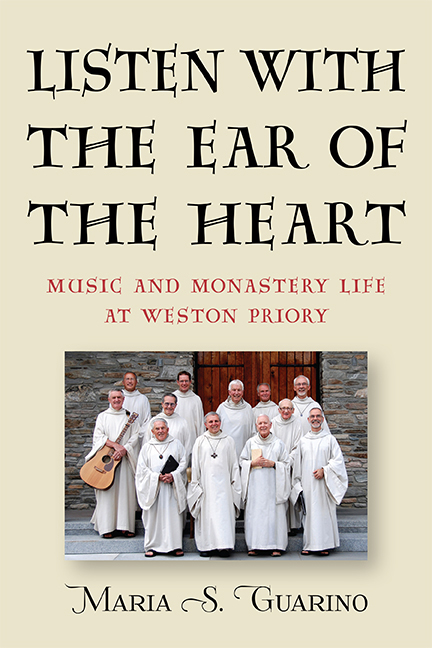Book contents
- Frontmatter
- Dedication
- Contents
- Preface
- Acknowledgments
- Introduction
- 1 Ethnography in a Monastery
- 2 Singing like Benedictines: A Visit with Gregorian Chant
- 3 Singing like Weston Monks
- 4 My Novitiate: Understanding Craft
- 5 Music as Craft: Creating a Tradition
- 6 Monastic Spirituality: Learning to Listen with the Ear of the Heart
- Notes
- Bibliography
- Index
- Frontmatter
- Dedication
- Contents
- Preface
- Acknowledgments
- Introduction
- 1 Ethnography in a Monastery
- 2 Singing like Benedictines: A Visit with Gregorian Chant
- 3 Singing like Weston Monks
- 4 My Novitiate: Understanding Craft
- 5 Music as Craft: Creating a Tradition
- 6 Monastic Spirituality: Learning to Listen with the Ear of the Heart
- Notes
- Bibliography
- Index
Summary
Contemplation is the highest expression of man's intellectual and spiritual life. It is that life itself, fully awake, fully active, fully aware that it is alive. It is spiritual wonder. It is spontaneous awe at the sacredness of life, of being.
—Thomas Merton, New Seeds of ContemplationOn Being Present
It was a brisk May morning when I stepped out of the guesthouse into the predawn darkness in what had become the daily ritual of my ethnomusicological field research with the Benedictine monks of Weston Priory in the rural Vermont mountains. The monastery bells echoed in the distance as I walked along the dirt road connecting the guesthouse to the chapel. The sound of gravel crunching beneath my feet seemed an affront to the intense stillness of the night forest around me. I thought about the archive of bulletins brother John handed me earlier in the week—a pile of letters and pamphlets saved over the course of nearly sixty years. Having read through the earliest bulletins before Compline—the last prayer of the day—the previous evening, I smiled as I recalled a 1961 bulletin with the brothers’ humorous description of gathering for the first Divine Office prayer of the day: “Getting up at that hour is distinctly not among the pleasures in life. Yet there is always competition among the brethren to reach the chapel first.” I knew that no matter how fast I walked, brother Columba would already be in the dark chapel. He always beat me there, regardless of how early I arrived. But seeing him each morning sitting in quiet repose had become a kind of comfort. I knew he would be there. It may be a simple statement, but this realization allowed me to begin to understand the complex experience of presence—the presence of selves and others—in a monastic community and in field research. I was alone with my thoughts in the dark forest. I would sit in the quiet stillness of the nearly empty chapel for the long Vigil prayer. I would speak to no one until at least late morning that day, if not later. But the brothers would be there. They would be present. I could depend on that.
- Type
- Chapter
- Information
- Listen with the Ear of the HeartMusic and Monastery Life at Weston Priory, pp. 1 - 20Publisher: Boydell & BrewerPrint publication year: 2018

